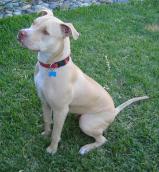
This is a placeholder text
Group text
by Prager on 13 October 2018 - 17:10
able to adapt to many different functions or activities. While line breeding is good when you breed and when done properly but do not forget to outcross!
by duke1965 on 13 October 2018 - 20:10
you are all missing the point a bit, but that is ok, bad side of internetdiscussions ![]()
by Rik on 13 October 2018 - 23:10
if anyone care to go back to the beginning, it looks like all first generation dogs were open. no surprise. Captain and company started inbreeding almost as soon as their choices were available. Horand sons to Horand daughters and other examples.
Lucie von Starkenburg, yikes, pretty sure I bought a direct decendant from this foundation dog in the 90's (from the very top Canadian SL kennel in SS land. my handler (Jimmy Moses) took one look at her when I pulled her out of the crate and bluntly asked me "how stupid are you, send her back"
I mean really, why do people want to talk about breeding the GSD and talk about zebra or flamingo or anything but the GSD.
there is a history and pics here back to the very beginning. and exactly what the original founders wanted and intended their dream to be and how they went about setting in flesh what we have today.
whatever you are sitting there looking at in a GSD, you can start tracing back and find exactly the first example of where it went right or wrong.
jmo,
Rik
by joanro on 13 October 2018 - 23:10
Rik, this is not a discussion about the origin of the gsd....it's a discussion on INBREEDING....Duke believes or at least used as an example of how inbreeding created uniformity in zebra and flamingo. He is wrong in my opinion because they are wild selected SPECIES, not domestic dogs.
by Rik on 13 October 2018 - 23:10
inbreeding was used to create uniformity in the GSD. and unlike all the wild examples, the intent, the method and the result can be traced from today back to the beginning.
Rik
by joanro on 14 October 2018 - 00:10
And what has the historic life span of the gsd?
I believe it was call who told us his mentor had been involved with the breed since the 30 s and he said the usual life was only 8 to 10 years....that's pathetic. The original dogs used and inbred to creat the breed were probably not real healthy. **That** would never happen with wild species.
by Rik on 14 October 2018 - 00:10
"inbreeding is useful in setting desired traits, one has to be very carefu of bad/poor traitsl" if that is not what he meant, I would appreciate him telling me directly where I misunderstood. and well, that was before he started all the zebra stuff.
but anyway, if I misunderstood a thread on inbreeding on a dog forum to be relevant to dogs, regardless of breed, please feel free to correct me again.
Rik
by darylehret on 14 October 2018 - 00:10
True, adaptability narrows with inbreeding. But keep in mind, the whole point of a BREED is to fixate a certain type, or few types. That's what Stephanitz was going for, he already HAD his ideal type with Horand. What most people assume was "created" by Max, was in fact already existent, but the point of developing a breed is to enable the faithful reproduction of those characteristics. And so, Horand became the first popular sire of the German Shepherd syndrome. But NOW, the variation found in German Shepherd dogs today could almost earn the breed a "Mutt" status. I think the breed types (S/W/ASL or whatever) should actually become three or so separate breeds. But there's a reason they don't and a whole different subject for another thread.
Even with a small inbred population, it is not difficult to preserve more than a few allele variants of a specified gene. It may be past a critical point for the cheetah, but in the species of "dog", there is more genetic diversity (allelic variants) than nature could EVER have done without centuries of human intervention.
by joanro on 14 October 2018 - 01:10
Me: true....but how many of the breeds could survive without human intervention....I'm talking about being able to reproduce without ai, without c-section...the bulldog is one breed that would be extinct without human intervention for repro. Not to mention soft pallet resection so they can even breath.
Now how many breeds could survive on their own, without human intervention...not many breeds could survive in the wild without humans. Yes, the many dog breeds are unrecognisable as the same species and deformities are selected for, nature would eliminate them. Good thing humans love the freaks they created, because many of them can't survive without humans taking care of every single aspect of their lives.
by 1Ruger1 on 14 October 2018 - 02:10
Lol this is classic! Love it !!
And the same can be said for our human counterparts as well !!! “ lmao
....the freaks, lol Indeed !!!
😆🤣😆 good stuff!
Contact information Disclaimer Privacy Statement Copyright Information Terms of Service Cookie policy ↑ Back to top




